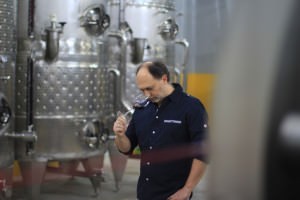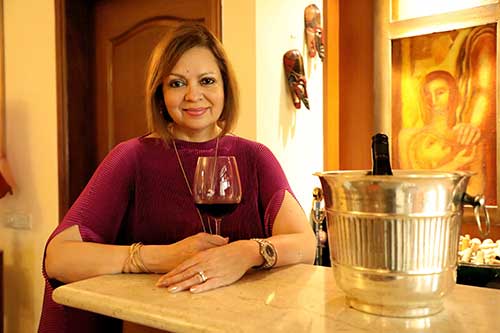“India was a challenge,” says Andrea Valentinuzzi, Italian winemaker at the new SDU Winery, Karnataka. “No one could believe that India can produce great wines .” He wants to change that perception, and is ready to spend the time and effort on doing so. SDU, which calls itself a boutique winery, has started by making 5000 cases of wine across 3 varieties in 2013-14 with two labels in the market at present – the entry level Cabernet Sauvignon and Syrah, with a Chardonnay on its way shortly, and Reserves to follow soon.
Valentinuzzi is not new to India, having already spent a few years in Nashik in Maharashtra with Vintage wines, maker of Reveilo, an established wine company. The question that interested me was why he chose India to make wines, after working across South America, California, Australia and Europe.
It was the challenge of India, he said.
“I’m not a winemaker who can take 400 consultancies and send instructions by email. I believe a winemaker must be there at critical times – crushing, bottling, for instance- during the winemaking cycle. It also helps that the harvest in India is around March, in Europe it’s in September. So I can manage both.” As for the difference between Nashik region in Maharashtra and SDU’s Nandi Valley region in Karnataka, it was more the soil than the climate. “The soil in Karnataka is red, while in Nashik it’s black, loamy. Both are totally different.”
His earlier project with Reveilo also included producing wines from popular Italian varieties – Sangiovese, along with Grillo and Nero d’Avola. With Deva, he has started with international grapes. “It depends on what suits the environment,” he points out. “If you plant a vineyard and make a mistake, you must face the consequences of that for the next 20 years, every day when you awake in the mornings. So you need to plan, strategise and choose.”
It helped that Syrah and Cabernet Sauvignon had already proved they could grow well in Karnataka. “The soil here is similar to that of Australia, which is already famous for growing these grapes. So, apart from the Indian monsoon, which is totally different from anything in Australia, I feel confident about the potential of these grapes.”
So then, why the Chardonnay, which is considered harder to grow here than the already established white varieties in India – Chenin Blanc and Sauvignon Blanc? “Chardonnay is the most popular white variety in the world, “says Valentinuzzi, “It can adapt almost everywhere. Sure, it’s more difficult in India, maybe the yield will be lower, which is why less growers are growing it here. It’s an international grape variety, and we are making an international style of wine with it.” Deva will have 2 Chardonnay labels – the regular and the Reserve, the latter barrel-fermented before ageing.
It’s time for the quality question – why are many Indian wines unable to sustain the quality they start out displaying? This is a serious question, and Valentinuzzi gives it serious thought. “There are 3 reasons,” he says, “First, it depends from where you source your grapes. If it comes from your own vineyards, as ours do, then you can control quality. For growers, it is about the income generated from the grapes they sell, so price per kilo becomes important. On the other hand, we decide for ourselves -in fact we have dropped yield for our Chardonnay dramatically, over 50%, so that we get the best possible wine from our grapes.
“Secondly, it also depends on how often you change your winemaker. I consider a winemaker like a chef. Everyone might have the same recipe, but each will have a different approach and feeling. It takes time to understand conditions, problems. If you change your winemaker – one day an Italian, the next day French, the third, an Australian – well, your wine cannot be consistent,” he shrugs.
The third reason – a very important one – is to understand that winemaking is a long term investment. If you’re in it to make a quick buck, then the wine business is not for you. It takes over 10-15 years to set up a winery, establish and build image. It requires a lot of investment, he adds.
Valentinuzzi sees a huge jump in the overall quality of Indian wines over the last few years. “it’s also incredible just how fast the Indian consumer is learning about wine and asking for quality. There is so much potential here, but we have to be patient. There is much education required yet, and the wine culture has to spread.”
What would he pair his wines with? “Steamed rice!” he quips. “Yes, there are spices and chilli in Indian cuisines, but we can produce wines that go with it. The sun is a big advantage here, it ripens the grapes quickly. The key is to pick the grapes at the right time, so the tannins stay softer and the wine is easier to drink.”
In Karnataka, Deva Cabernet Sauvignon is priced at Rs 600 ($9), and the Syrah at Rs 500($8). Deva also comes in 350ml bottles, Rs 325 ($5) for the Cabernet Sauvignon, Rs 275 ($4) for the Syrah. The look of the bottles have been kept deliberately Indian, with a stylized diya (oil lamp) under the name Deva, which means divine being or god in the ancient Indian language of Sanskrit.











